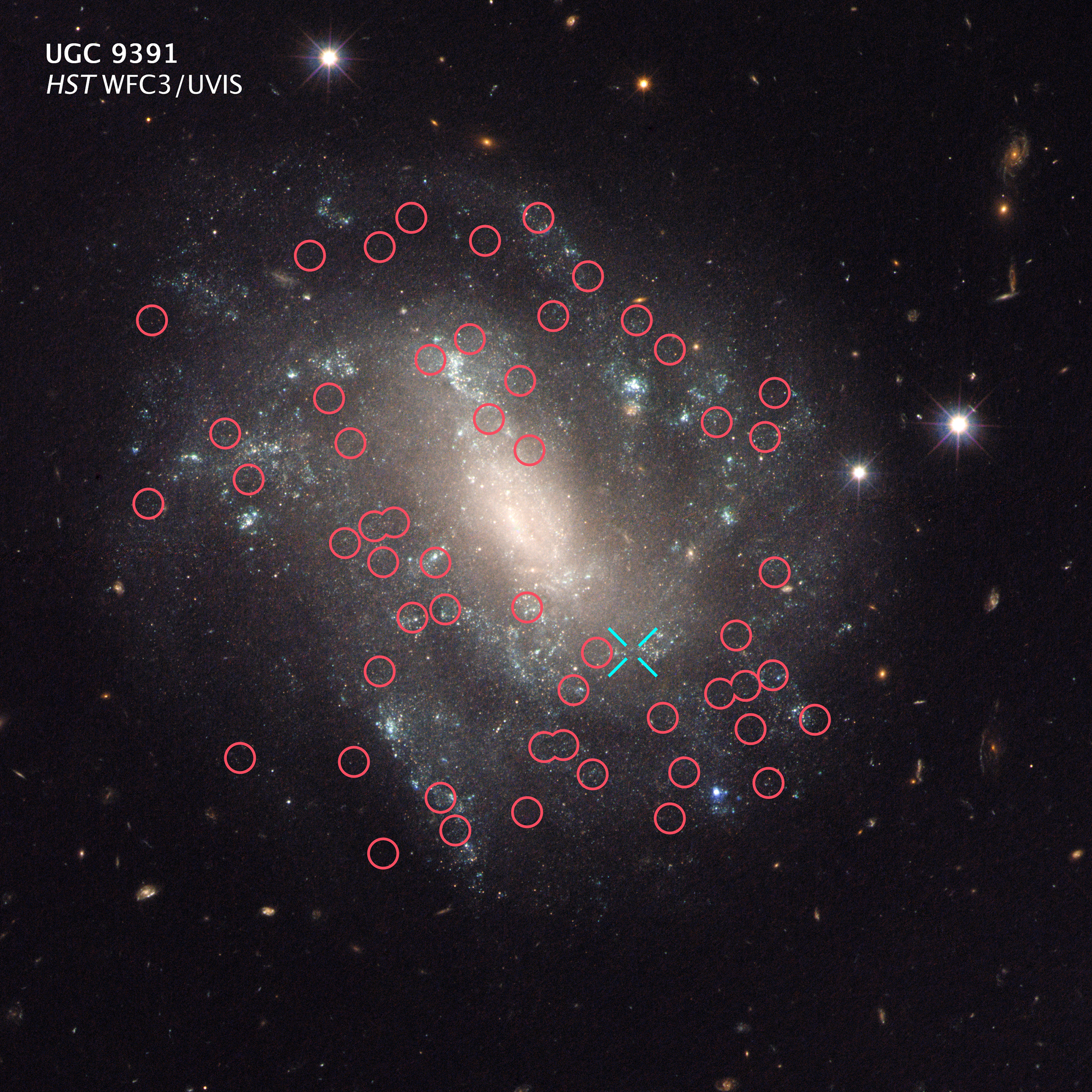
ugc 9391 annotated
The galaxy UGC 9391, contains two types of stars that astronomers use to calculate accurate distances to galaxies, a key measurement in determining the Hubble constant. The red circles mark the locations of Cepheid variable stars. These stars pulsate at rates that correspond to their true brightness, which can be compared with their apparent brightness as seen from Earth to accurately determine their distance. The blue "X" at bottom right denotes the location of supernova 2003du, a special class of exploding star called a Type Ia supernova. These supernovae are another commonly used cosmic yardstick. They flare with the same brightness and are brilliant enough to be seen from relatively longer distances. Astronomers calibrate the supernovae with the Cepheids in galaxies such as UGC 9391 so that they can accurately calculate the distances to faraway exploding stars. UGC 9391 resides 130 million light-years from Earth.
- X


























